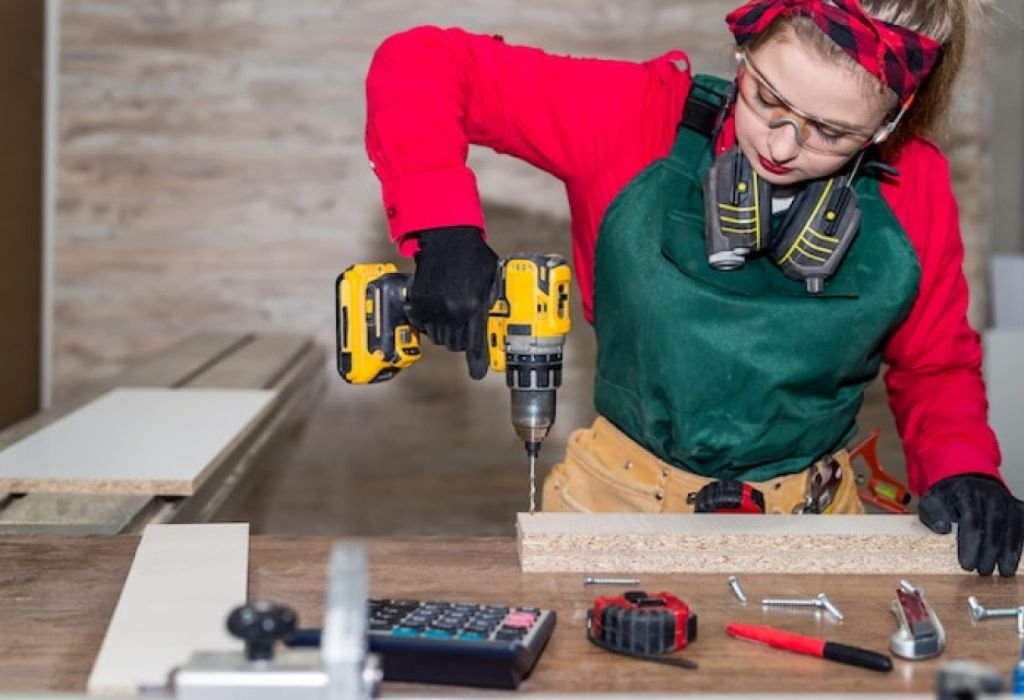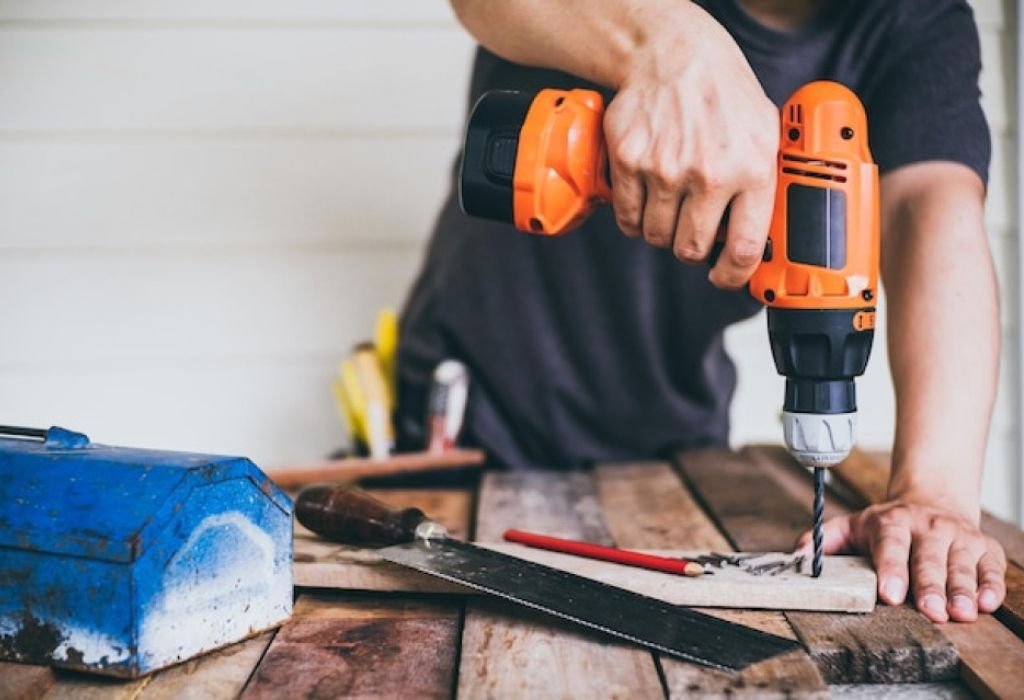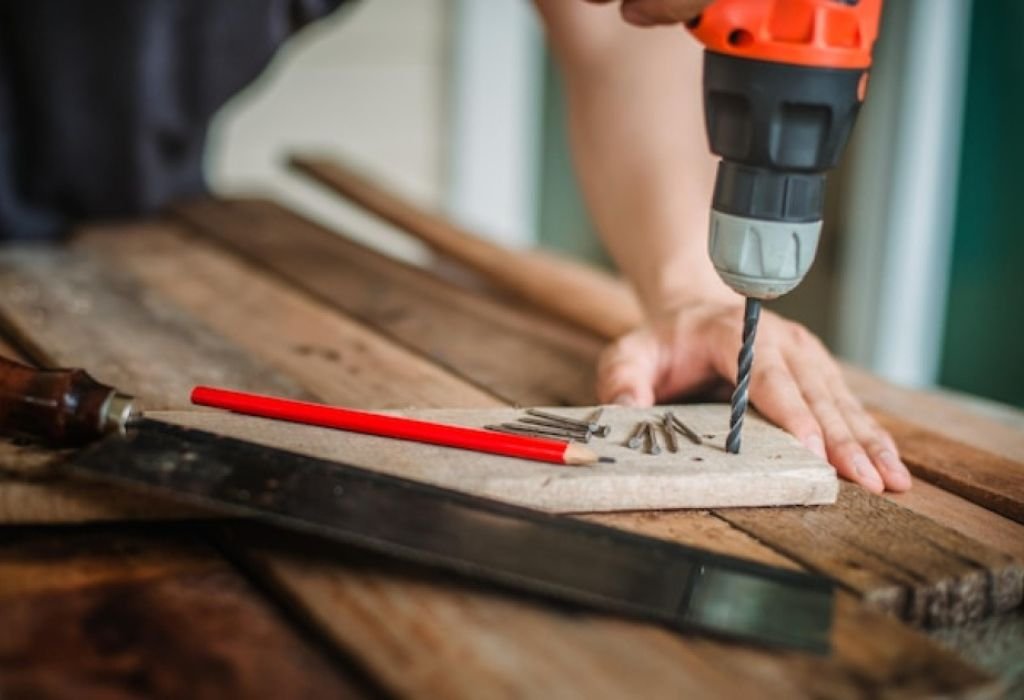A homeowner leans into a corner cabinet, drill in hand, but the tool won’t fit.
The screw remains out of reach, and frustration builds until the right angle drill comes to the rescue.
Suddenly, what seemed impossible becomes a quick fix.
Standard drills are powerful, but their bulky design struggles in tight spaces. That’s where the right angle drill proves its worth.
With its 90-degree head and compact profile, it’s built for spots where ordinary drills fail.
Many ask what are right angle drills used for, and the answer stretches across plumbing, electrical work, woodworking, and countless DIY projects.
Demand for versatile tools like right angle drills is growing as DIY projects surge nationwide. In fact, the global power tools market is expected to reach $40 billion by 2027, driven by home improvement and professional use source.
Among these tools, the right angle drill stands out for its unique ability to balance torque, maneuverability, and precision.
Whether it’s threading pipes through joists, running wires behind drywall, or drilling pilot holes inside furniture frames, the right angle drill offers a solution that saves both time and energy.
Its angled design not only increases accessibility but also reduces strain, making it a favorite for both professionals and homeowners.
This guide explores exactly what right angle drills are used for. From plumbing to carpentry, we’ll break down the scenarios where this tool excels, highlight its advantages and limitations, and show why it deserves a spot in every serious DIY toolbox.
What Is a Right Angle Drill?

A right angle drill is a compact power tool with a 90-degree head that makes drilling in confined spaces possible. It was designed for jobs where traditional drills are too bulky.
Most right angle drills have high torque and slower speeds, making them powerful for drilling through wood, drywall, and even metal. Their ability to accept standard bits makes them as versatile as full-sized drills.
What makes a right angle drill unique?
Its angled head allows access to tight corners and narrow spaces.
Is it only for professionals?
No, both contractors and DIYers use them for practical projects.
How does the 90-degree head help?
It provides clearance when drilling between studs or under sinks.
Does it fit regular drill bits?
Yes, standard bits fit in most right angle drill chucks.
Are corded or cordless models better?
Cordless models are portable, while corded ones provide continuous power.
Core Uses of Right Angle Drills
Right angle drills are essential when a standard drill cannot reach. They are especially useful in plumbing, electrical work, and carpentry.
Their strength lies in offering torque in spaces too tight for other tools. This makes them indispensable in both professional and home improvement projects.
What are right angle drills used for most often?
They are used in plumbing, wiring, cabinetry, and tight-space drilling.
Why are they great for tight spaces?
The angled head allows drilling between studs and inside cabinets.
Do plumbers use them regularly?
Yes, right angle drills are one of the most common tools in plumbing.
Are they useful for woodworkers?
Absolutely, especially for cabinetry and furniture building.
Can they drill through drywall or studs?
Yes, they can drill clean holes in studs, drywall, and framing.
Right Angle Drills in Plumbing Projects
Plumbers rely on right angle drills to bore holes in studs and joists for running pipes. The tool’s design reduces fatigue in overhead or cramped plumbing jobs.
They are also capable of using hole saws to cut larger openings for pipes and fittings. This makes them one of the most reliable tools for rough-in plumbing work.
Why do plumbers prefer right angle drills?
Because they fit between framing studs and under sinks.
Can they drill large holes for pipes?
Yes, with the right hole saw, they can cut holes for plumbing lines.
Do right angle drills reduce fatigue in overhead work?
Yes, the ergonomic design minimizes strain in tough positions.
What bits work best for plumbing holes?
Self-feed and spade bits are commonly used with right angle drills.
Are right angle drills safer in plumbing projects?
Yes, they prevent awkward handling that causes slips in tight spaces.
Right Angle Drills in Electrical Work
Electricians also use right angle drills when installing wiring and conduit. They allow drilling between studs without damaging walls.
The tool’s power and compact design make it perfect for overhead work like ceiling lights or junction boxes.
Why are right angle drills used by electricians?
They enable wiring holes through studs and joists in small spaces.
Can they drill between wall studs for wiring?
Yes, they are designed to drill holes in studs for cables.
Do they help install ceiling light boxes?
Yes, their angle makes drilling in ceilings much easier.
Are they compatible with hole saws?
Yes, electricians often use them with hole saws for boxes.
How do they improve job site efficiency?
They save time by fitting where a standard drill cannot.
Right Angle Drills in Woodworking & Carpentry

Woodworkers and carpenters value right angle drills for cabinetry, furniture, and framing. They allow pocket hole drilling and precise corner work.
They provide torque needed for hardwood while maintaining accuracy in tight conditions.
Do woodworkers use right angle drills?
Yes, especially for cabinetry and furniture building.
Can they drill pocket holes?
Yes, they are effective for pocket hole joinery.
Are they good for cabinetry?
Yes, they fit inside cabinets for installing hardware and hinges.
Do they provide enough torque for hardwood?
Yes, most models deliver torque strong enough for dense woods.
What accessories make them more useful?
Angle attachments and compact bits extend their versatility.
Advantages of Using Right Angle Drills
Right angle drills bring several benefits beyond tight-space drilling. They improve ergonomics, safety, and efficiency on the job.
Their torque allows them to handle tasks like boring large holes, while their design reduces wrist strain.
What are the benefits of a right angle drill?
Access, torque, and versatility in tight areas.
Are they safer in confined spaces?
Yes, they reduce risk of slips and awkward angles.
Do they reduce wrist strain compared to standard drills?
Yes, the angled grip makes drilling more comfortable.
Can they handle heavy-duty torque?
Yes, many models are built for high-torque applications.
Do cordless right angle drills last long enough?
Yes, modern batteries provide ample runtime for most projects.
Limitations of Right Angle Drills
Despite their strengths, right angle drills have some limitations. They may be heavier, slower, and more expensive than regular drills.
They are best used as a specialty tool rather than a full replacement.
Are right angle drills expensive?
Yes, they often cost more than standard drills.
Do they replace regular drills completely?
No, they are a supplement, not a replacement.
Are they slower than standard drills?
Yes, they typically operate at lower speeds.
Do they have limited bit compatibility?
Most fit standard bits, but size may limit some accessories.
Are they heavier than regular drills?
Yes, some models are bulkier and harder to hold long-term.
Choosing the Right Angle Drill for DIY Projects
Selecting the right drill depends on the project, budget, and preference. Buyers should compare torque, RPM, and portability.
Cordless right angle drills are more flexible, while corded models provide endless power.
What should you look for when buying a right angle drill?
Torque, RPM, size, and battery life.
Are cordless models strong enough for DIY use?
Yes, most cordless models are ideal for home projects.
Should you buy a compact or heavy-duty drill?
Compact drills are for DIY, heavy-duty for professionals.
Which brands are most trusted?
Milwaukee, DeWalt, and Makita are highly recommended.
Do warranties matter for drills?
Yes, warranties protect against motor and battery failures.
Safety and Best Practices

Using a right angle drill safely ensures long tool life and user protection. Wearing safety gear and using correct bits is crucial.
Proper grip and awareness of torque prevent injuries during use.
Are right angle drills safe for beginners?
Yes, but proper handling is important.
Should you wear protective gear?
Yes, goggles and gloves are essential.
How to avoid kickback in tight spaces?
Maintain a firm grip and drill slowly.
Do you need special drill bits?
Standard bits work, but shorter bits are ideal for tight spots.
What maintenance extends tool life?
Regular cleaning, lubrication, and battery care.
Conclusion
So, what are right angle drills used for? They are essential for drilling in tight spaces across plumbing, electrical work, and woodworking.
Their compact design, torque, and precision make them a must-have for professionals and DIY enthusiasts alike. While not a full replacement for standard drills, they provide unmatched access and efficiency where space is limited.
Adding a right angle drill to your toolbox ensures you’ll be prepared for projects that standard tools cannot handle. It is the specialty tool that turns frustration into progress and makes even the toughest spaces accessible.

I’m John F. Nicholas, the founder, lead writer, and drill enthusiast behind 101drill.com. With years of hands-on experience in power tools and DIY projects, I created this platform to share practical knowledge, expert tips, and real-world insights to help others master the art of drilling.
